By
Dr. Gorter, et al.
Robert Gorter, MD, PhD, is emeritus professor of the University of California San Francisco Medical School (UCSF)
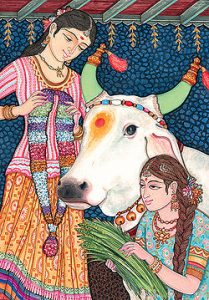
In Hinduism, the cow is a symbol of wealth, strength, abundance, selfless giving and full of earthly life.
Cattle slaughter in India is a historically taboo subject because of the cow’s traditional status as a respected creature of God, in Hinduism. Dairy products are extensively used in Hindu culture and are one of the most essential nutritional components of Hindu meals. Article 48 of the Constitution of India mandates the state to prohibit the slaughter of cows and calves and other milk and draught cattle. Confusion is about the slaughter of bulls (male cow).
“India has 115 million buffaloes, more than half the world’s population, and produces about 1.53 million metric tons of beef every year.”
India has a checkered past with cow slaughter bans. The Muslim Mughals ruled for three centuries and the British colonized the country for two centuries. The first Mughal emperor, Babur, banned cow slaughter in 1527 out of respect for Hindus; but some Hindu kings did not enforce the ban. The big picture today is a mixed one: On the one hand, there are Muslims and Christians who don’t eat beef out of respect for their Hindu neighbors. On the other, there are Hindus who eat beef……..
Mahatma Gandhi: “The greatness of a nation can be judged by the way its animals are treated”
India’s rapidly growing beef industry is a political issue, especially during elections when the country is divided along cultural, religious, and political lines: Muslims and Hindus, left versus right, beef-eating Hindus versus non-beef eating Hindus. Politicians take a stand on the issue just as they take a stand on any issue of public concern. A politician’s position on the matter determines how much support he or she would get and from whom.
When Narendra Modi, India’s current Prime Minister, ran for office in 2014, one platform he ran on was criticizing the ruling Congress Party-led government’s “Pink Revolution”—the nickname for India’s rising beef exports. Modi blamed the Congress Party for encouraging beef trade to woo India’s 180 million Muslims. Modi promised to curb the industry, a promise he has not followed through with (yet?) since he became Prime Minister in May of 2014.
Beef exports have increased by 16% since Modi came into power. “It was just a ploy to get the vote,” says Rajhans. International anti-slaughter activists like PETA say that the BJP’s push for a uniform, nationwide, cow slaughter ban itself is contradictory: The BJP touts milk as a revered cow product, encouraging the growth of the dairy industry. With 76 million cows, India is now the world’s largest milk producer producing 140 million metric tons of milk a year. Most cows, past their milk-producing age, end up being turned to leather and beef rather than living out their years in cow shelters—a retirement home of sorts for cows.
As animal-rights groups decry the terrible conditions in slaughterhouses and religious groups mourn the sacrilege of cow slaughter—urban, well-traveled Indians are developing a taste for beef. Many upmarket, chic, restaurants offer steaks on their menu—and the people ordering them aren’t always Muslim or Christian. While some Hindus might argue that the beef comes from buffalo, those who have already developed a taste for beef might not want to believe that there’s cow in their burgers. Does not knowing where beef comes from absolve a Hindu of eating cow meat? Even if so, it’s still likely supporting a booming (and illegal) cow-slaughter industry.
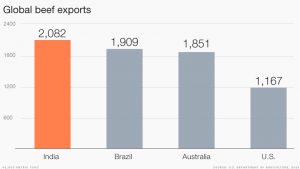
A country where cows are sacred is exporting a record amount of red meat. India was the world’s top beef exporter over the last 12 years, according to the U.S. Department of Agriculture, widening its lead over other more established suppliers such as Brazil, Argentina and Australia. India exports large quantities of meat from water buffalo; a member of the bovine family classified as beef by the USDA and by international law. The buffalo trade has been growing rapidly and now earns India more export dollars than basmati rice.
Still, the $4.8 billion annual export trade has almost developed “by accident” as these animals are needed to keep India’s huge domestic dairy industry going, said Rabobank analyst Pawan Kumar.
During the religious Hindu festival Sankranti every January, the open fields in farming villages throughout India are filled with people dressed in their best holiday attire celebrating the harvest and new beginnings. It is hard to say who is more colorful—the people or the cattle being led to the field. This is the day for honoring cattle and every household is parading its bemused bovine population: horns painted, necks garlanded, bells tinkling.
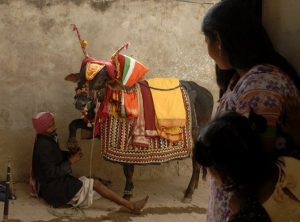
The Hindu reverence of cattle—particularly the cow—is well-known. Census data shows that nearly 80 percent of India’s 1.2 billion populations are Hindu. Most Hindus worship the cow and abstain from eating beef, so it might come as a surprise that India has become the world’s largest beef exporter. India’s beef industry says all its beef comes from buffaloes, a claim severely challenged by right wing, religious, and animal rights groups. While it’s true that cow slaughter is banned by most Indian states and the export of cow meat is against the law, the acceptance of the cow’s sacredness is not uniform throughout India and it’s likely that cow meat is sneaking into the buffalo beef market. The export numbers don’t match up, and it’s suspected that cow meat is being largely snuck out.
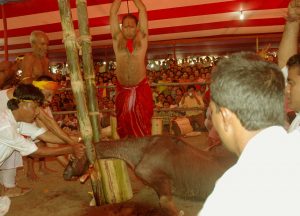
A male buffalo calf about to be sacrificed by a priest in the Durga Puja festival. It is not always clear why bulls can be sacrificed in India, as for many, to have a cow one needs a bull.
On October 26, 2005, the Supreme Court of India, in a landmark judgement upheld the constitutional validity of anti-cow slaughter laws enacted by different state governments in India. 24 out of 29 states in India currently have various regulations prohibiting either the slaughter or sale of cows. Kerala, West Bengal, Arunachal Pradesh, Mizoram, Meghalaya, Nagaland, Tripura and Sikkim are the states where there are no restrictions on cow slaughter.
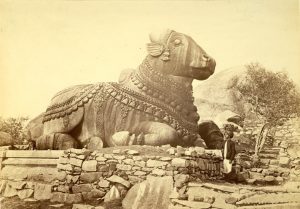
A 2nd Century A.D sculpture of Nandi bull.
The laws governing cattle slaughter vary greatly from State to State. The “Preservation, protection and improvement of stock and prevention of animal diseases, veterinary training and practice” is Entry 15 of the State List of the Seventh Schedule of the Constitution, meaning that State legislatures have exclusive powers to legislate the prevention of slaughter and preservation of cattle. Some States allow the slaughter of cattle with restrictions like a “fit-for-slaughter” certificate which may be issued depending on factors like age and gender of cattle, continued economic viability etc. Others completely ban cattle slaughter, while there is no restriction in a few states. Prohibition of cow slaughter is a Directive Principles of State Policy contained in Article 48 of the Constitution. It reads, “The State shall endeavor to organize agriculture and animal husbandry on modern and scientific lines and shall, in particular, take steps for preserving and improving the breeds, and prohibiting the slaughter of cows and calves and other milk and draught cattle.”
Cows are routinely shipped to states with lower or no requirement for slaughter, even though it is illegal in most states to ship animals across State borders to be slaughtered. Many illegal slaughterhouses operate in large cities such as Chennai and Mumbai. As of 2004, there were 3,600 legal and 30,000 illegal slaughterhouses in India.[19] Efforts to close them down have, so far, been largely unsuccessful. In 2013, Andhra Pradesh estimated that there were 3,100 illegal and 6 licensed slaughterhouses in the State.[20]
India produced 3.643 million metric tons of beef in 2012, of which 1.963 million metric tons was consumed domestically and 1.680 million metric tons was exported. India ranks 5th in the world in beef production, 7th in domestic consumption and 1st in exporting. However, most of the exported “beef” is water buffalo meat; water buffalo are not usually considered holy in Hinduism (sic).
In addition, since 2014, India is the world’s biggest milk producer, having overtaken the European Union, according to the latest edition of the government’s annual economic survey.
Recording a year-on-year growth rate of just over 4%—almost double that of the rest of the world—India saw 132.4 million metric tons of peak milk production from 2012-13, making it the biggest global producer.
“The average year-on-year growth rate of milk at 4% via-a-vis the world average of 2.2% shows sustained growth in availability of milk and milk products (including beef?) for the growing population,” the survey said, adding that the commodity has become an important secondary source of income for 70 million rural households.
Increased milk production means -in part- also increased number of cows. The government’s annual economic survey avoids carefully mentioning what has happened with the increased number of cattle: did the increased number of cows fuel the increase of beef export to 5 billion US$ in 2014?
The economic survey, which is compiled each year by the Ministry of Finance, reviews developments in the Indian economy over the previous 12 months, summarizing the performance of major development programs, and highlighting government policy initiatives and the prospects of the economy in the short- to medium-term.
According to these documents, India is also the second largest producer of fruits and vegetables, the largest producer of mangos, bananas, coconuts, cashews, papayas and pomegranates, and the largest producer and exporter of spices.
The country also ranks second in terms of world fish production, contributing about 5.4% to global production, with an estimated 9.45m metric tons of catch.
But it is in milk where the government has seen the biggest change, which the report attributes to a policy launched in 2012 to improve productivity, expand infrastructure and provide producers with closer access to the market.
The first phase of the National Dairy Plan began at a time when India had seen the number of milk animals increase from 62 million in 2000 to over 83 million in 2014.
Question: “Does the increase with 20 million cows during these last 15 years explain the parallel boom in the export of beef?”
Elsewhere, the report highlighted that the government’s focus for the next year would be on strengthening the poultry system. Egg production was around 70 billion in 2013, while the report estimated poultry meat production at 2.68 million metric tons.
Historic and socio-economic background of bans on cow slaughter and the current “Pink Revolution”
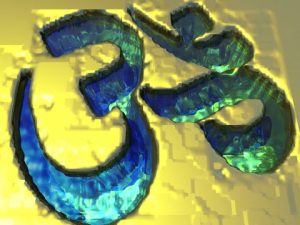
Ancient India
The first sovereign Prithu chasing earth-goddess Prithvi, who is in the form of a cow. According to the Puranas, ancient Hindu texts eulogizing various deities, Prithu milked the cow to generate crops for humans.
The Puranas are post-Vedic texts which typically contain a complete narrative of the history of the Universe from creation to destruction, genealogies of the kings, heroes and demigods, and descriptions of Hindu cosmology and geography. There are 17 or 18 canonical Puranas, divided into three categories, each named after a deity of the Trinity: Brahma, Vishnu and Shiva. Although these scriptures have been composed between 1500 BC and 300 BC, they reflect a primordial wisdom that was handed over verbally (and by singing) from generation to generation; like the Germanic tribes did with the Eddah.
The cow has been a symbol of wealth in India since ancient times. However, they were neither inviolable nor revered in the same way today. The cow was possibly revered because Hindus relied heavily on it for dairy products and for tilling the fields, and on cow dung as a source of fuel and fertilizer. Thus, the cow’s status as a “caretaker” led to identifying it as an almost maternal figure (hence the term gau mata (mother cow)). Buddha pointed out that ritualistic practices like animal sacrifices are not good. This became one of the core teachings of Buddhism, which was later adopted by Hinduism. Jainism also played a role in cow protection idea in Hinduism.
Robert Gorter: One who is interested in understanding better why the cow is holy in India and, for instance, the eagle among the Native Americans and the lion an exceptional animal in Europe, must read the book by Rudolf Steiner (1861-1925): “Harmony of the Creative Word: The Human Being and the Elemental, Animal, Plant and Mineral Kingdoms”
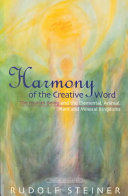
Twelve Lectures Given in Dornach, Switzerland, Between 19 October and 11 November, 1923. Rudolf Steiner Press, 2001, ISBN: 1855840987, 9781855840980 (220 pages)
In the olden days, cattle being limited to select few fortunate folks, the cows enjoyed the status that gold or money enjoys today. In addition, it has been suggested by author and orator Terence McKenna that religious reverence for the cow is a result of early humankind’s association of psilocybin mushroom with it, this association having developed as a result of the discovery of said mushrooms in the animal’s excrement. Panchagavya, a mixture of five products of cow milk, curd, ghee, urine and dung, is used in Brahmanical rituals. The mixture is also smeared on ulcers as a healing product.
Hinduism is based on the concept of omnipresence of the Divine, and the presence of a soul in all creations including the bovine. God Krishna, one of the incarnations (Avatar), tended cows. The cow and bull represent the symbol of Dharma.
According to legend, Chola King Manu Needhi Cholan killed his own son to provide justice to a cow. The king hung a giant bell in front of his courtroom for anyone needing justice to ring. One day, he came out on hearing the ringing of the bell by a cow. Upon inquiry he found that the calf of that cow was killed under the wheels of his son’s chariot. In order to provide justice to the cow, he killed his own son Veedhividangan in the same manner that the calf had been killed.
Medieval India
The perception that cow slaughter and beef eating habits started in India with the arrival of Islam is inaccurate. Vedas describe many gods such as Indira and Agni as having preferences for cattle meat. Cow slaughter became prominent in India in the medieval age after 1000 AD, when parts of India was invaded by various Islamic rulers of Arab and Central Asian Turkic origin. According to Islamic traditions in Arab countries, goats and sheep were killed as a sacrifice. On special occasions they would sacrifice camels. Islamic rulers, from Central and West Asia were not habituated to eating beef, as there were no cows in Arab countries. After Islamic rulers arrived in India, they began sacrificing cows, particularly on the occasion of Bakri-Id.
Ranjit Singh, founder of the Sikh Empire and Maharaja from 1801 to 1839, banned cow slaughter throughout his domains. Ralph Fitch, a gentleman merchant of London and one of the earliest English travelers to India, wrote a letter home in 1580 stating, “They have a very strange order among them – they worship a cow and esteem much of the cow’s dung to paint the walls of their houses … They eat no flesh, but live by roots and rice and milk.”
In 1756–57, in what was his fourth invasion of India, the founder of the Durrani Empire, Ahmad Shāh Durrānī sacked Delhi and plundered Agra, Mathura, and Vrndavana. On his way back to Afghanistan, he attacked the Golden Temple in Amritsar and filled its sacred pool with the blood of slaughtered cows. This final act was to be the start of long lasting bitterness between Sikhs and Afghans. Hyder Ali, sultan and de facto ruler of the Kingdom of Mysore from 1761 to 1782, made cow slaughter an offence punishable with the cutting of the hands of the offenders.
Mughal Empire
The Mughal emperor Babar ruled in 1526 that killing cows was forbidden.[42] In his Wasiyyat namd-i-majchfi (Persian: secret testament) to his son and successor, Humayun, dated First Jamadi-ul-Awwal 935 Hijri (11 January 1529), Babur wrote:
“The realm of Hindustan is full of diverse creeds. Praise be to God, the Righteous, the Glorious, the Highest, that He had granted unto you the Empire of it. It is but proper that you, with heart cleansed of all religious bigotry, should dispense justice according to the tenets of each community. And in particular refrain from the sacrifice of cow, for that way lies the conquest of the hearts of the people of Hindustan; and the subjects of the realm will, through royal favor, be devoted to you”.”
Later Mughal emperors, it is said, imposed selective restricted bans on cow slaughter.
The last Mughal emperor Bahadur Shah Zafar banned cow slaughter in 1857 in the territories he nominally controlled, a couple of months before being deposed and deported to Burma by the British.
Maratha Empire
The Maratha Empire through the late 17th and 18th centuries was typically inclusive of all groups regardless of religious belief. Religious minorities such as Muslims, Jains and Parsis were given jobs and other kinds of help such as hereditary grants in return for service, revenue rights and allowances; and permitted to build places of worship, sometimes with funding from the state. However, this tolerance of religious differences became sharply delineated with regard to cow protection.
The Maratha Empire took extensive steps to inhibit cow slaughter. However, some historians suggest that the crackdown on cow slaughter was enforced more rigorously on the empire’s frontiers, which would suggest that it was partly connected with the empire’s need to assert control over newly gained territories, and build support among the populace within shifting political boundaries.
In 1683, Sambhaji, the eldest son of Shivaji, is said to have executed a “Mahomedan of rank” for having killed a cow. Two Muslim butchers were publicly executed in Pune in 1775, for killing a cow and selling its meat. The hands and feet of another butcher implicated in the same crime were cut off, and the men who bought the meat (mostly Muslims, but at least one Chamar) were fined. In the 1760s, the Peshwa punished a qazi for permitting a butcher, who had killed a cow, to go free on payment of a modest fine. In 1793, then Peshwa Madhavrao II ordered that the right hands of three Mangs who killed a cow be cut off as a warning to Muslims who had newly arrived in the area.
The Marathas attacked the Portuguese-held Bassein Fort in 1739, and following the battle, the outnumbered Portuguese requested parley. The Portuguese offered to surrender their weapons, on the condition that Christian priests in the city wishing to leave would be given free passage, and that any Christians that stayed behind would be protected and granted their religious privileges. The Marathas honored these demands.
In the 1760s, Portuguese Christians were given further privileges. Priests were given grants to build churches, re-open disused churches and use materials from disused temples to build churches. Then Peshwa Madhavrao II gifted land in Pune to build a church in 1794 to serve his Portuguese and Goan gunners and recruited a priest on state expense. However, the Marathas warned that the religious concessions did not extend to cow slaughter. Despite the warnings, cow slaughter continued in the city. The Marathas set up blockades around Bassein (now Vasai, Maharashtra) in the late 1790s to prevent cow carcasses from being smuggled to butchers in Bombay and Salsette.
Jainism, traditionally known as Jain dharma, is an ancient Indian religion belonging to the śramaṇa tradition. It prescribes non-violence towards all living beings. The three main principles of Jainism are non-violence, non-absolutism, and non-possessiveness (detachment). Self-discipline and asceticism are major focuses of Jainism. Solidarity is the motto of Jainism.
The word “Jain” derives from the Sanskrit word jina (conqueror). A human being who has conquered all inner passions like attachment, desire, anger, pride, greed, etc. is called Jina. Followers of the path practiced and preached by the jinas are known as Jains.
Parsi is one of two Zoroastrian communities (the other being Iranis) primarily located in South Asia. Parsis migrated from Greater Iran to Gujarat and Sindh between the 8th and 10th century CE to avoid the persecution of Zoroastrians by Muslim invaders who invaded Iran.
At the time of the Muslim conquest of Persia, the dominant religion of the region (which was ruled by the Sasanian Empire) was Zoroastrianism. Iranians rebelled against Arab invaders for almost 200 years. In Iran, this period is now known as the “Two Centuries of Silence” or “Period of Silence”. During this time, many Iranians who are now called Parsi, chose to preserve their religious identity by fleeing from Iran to India.
Sikh Empire
Cow slaughter was banned by Maharajah Ranjit Singh, the founder of the Sikh Empire in Punjab. Many butcher houses were banned and restrictions were put on the slaughter of cow and sale of beef in the Sikh Empire, as following the traditions, cow was as sacred to the Sikhs as to the Hindus. During the Sikh reign, cow slaughter was a capital offence, for which perpetrators were even executed.
British Rule
With the advent of British rule in India, a new situation was created with the arrival of the Europeans, who were habituated to eating beef. Beef was a popular food for the British living in India. The first slaughterhouse in India was built in Calcutta (now Kolkata) in 1760 by Robert Clive, then Governor of Bengal. It could kill 30,000 animals per day (!). Several more slaughterhouses were set up in various parts of the country by the Commissariat Wing of the three British armies of Bengal, Madras and Bombay Presidencies. 350 slaughterhouses were constructed by 1910.
The reverence for the cow played a role in the Indian Rebellion of 1857 against the British East India Company. Hindu and Muslim sepoys in the army of the East India Company came to believe that their paper cartridges, which held a measured amount of gunpowder, were greased with cow and pig fat. The consumption of swine is forbidden in Islam. Since loading the gun required biting off the end of the paper cartridge, they concluded that the British were forcing them to break edicts of their religion. During Bahadur Shah Zafar’s brief reign as emperor the killing of a cow was made a capital offence.
Historians argue that the symbol of the cow was used as a means of mobilizing Hindus. In 1870, the Namdhari Sikhs started a cow protection revolution, which is known as the Kuka Revolution, in which they revolted against the British seeking protection of the cow. A few years later, Swami Dayananda Saraswati called for the stoppage of cow slaughter by the British. In the 1870s, cow protection movements spread rapidly in Punjab, the North-West Frontier Province, Awadh and Rohilkhand. The Arya Samaj had a tremendous role in skillfully converting this sentiment into a national movement.
The first Gaurakshini sabha (cow protection society) was established in the Punjab in 1882. The movement spread rapidly all over North India and to Bengal, Bombay, Madras presidencies and other central provinces. The organization rescued wandering cows and reclaimed them to groom them in places called gaushalas (cow refuges). Charitable networks developed all through North India to collect rice from individuals, pool the contributions, and re-sell them to fund the gaushalas. Signatures, up to 350,000 in some places, were collected to demand a ban on cow sacrifice. Between 1880 and 1893, hundreds of gaushalas were opened.
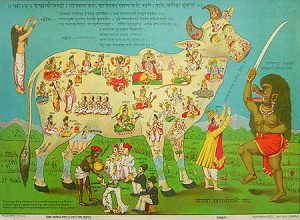
A pamphlet protesting against the Muslim practice of beef-eating. The demon Kali (far right) attempts to slaughter the sacred cow, represented by “the mother of cows” Kamadhenu in whose body all deities are believed to reside. The color version ran by the Ravi Varma Press (ca. 1912).
Cow protection sentiment reached its peak in 1893. Large public meetings were held in Nagpur, Hardwar and Benares to denounce beef-eaters. Melodramas were conducted to display the plight of cows, and pamphlets were distributed, to create awareness among those who sacrificed and ate them. Riots broke out between Hindus and Muslims in Mau in the Azamgarh district; it took 3 days for the government to regain control. The rioting was precipitated by contradictory interpretations of a British local magistrate’s order. He had apparently asked all the Muslims interested in cow slaughter to register, which undertaking was in fact performed to identify problem-prone areas. However, Muslims had interpreted this as a promise of protection for those who wanted to perform sacrifices.
The series of violent incidences also resulted in a riot in Bombay involving the working classes, and unrest occurred in places as far away as Rangoon, Burma. An estimated thirty-one to forty-five communal riots broke out over six months and a total of 107 people were killed.
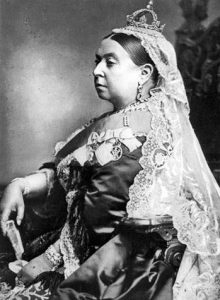
Queen Victoria (1819-1901) here on her 50th birthday of her reign in 1887
Queen Victoria mentioned the cow protection movement in a letter, dated 8 December 1893, to then Viceroy Lansdowne, writing, “The Queen greatly admired the Viceroy’s speech on the Cow-killing agitation. While she quite agrees in the necessity of perfect fairness, she thinks the Muhammadans do require more protection than Hindus, and they are decidedly by far the more loyal. Though the Muhammadan’s cow-killing is made the pretext for the agitation, it is, in fact, directed against us, who kill far more cows for our army, &c., than the Muhammadans.”
Some prominent leaders of the independence movement such as Mahatma Gandhi, in order to mobilize the public to participate actively in the freedom movement, assured them repeatedly that on achieving the goal of Swaraj, the first action of the Swadeshi Government would be to ban slaughter of cow and its progeny by law. Mahatma Gandhi, stated in a speech given in Muzaffarpur in 1917, that 30,000 cows were slaughtered daily (1 crore 10 lakhs annually) by the British. In December 1927 he stated, “As for me, not even to win Swaraj, will I renounce my principle of cow protection.”
The cow was venerated by Gandhi. He said: “I worship it and I shall defend its worship against the whole world,” and that, “The central fact of Hinduism is cow protection.” He regarded her better than the earthly mother, and called her “the mother to millions of Indian mankind.” Gandhi said, “Our mother, when she dies, means expenses of burial or cremation. Mother cow is as useful dead as when she is alive. We can make use of every part of her body – her flesh, her bones, her intestines, her horns and her skin.”
In 1940, one of the Special Committees of the Indian National Congress opined that slaughter of cow and its progeny must be totally prohibited. However, another Committee of the Congress opposed cow slaughter prohibition stating that that the skin and leather of cow and its progeny, which is fresh by slaughter should be sold and exported to earn foreign exchange.
In 1944, the British placed restrictions on cattle slaughter in India, on the grounds that the shortage of cattle was causing anxiety to the Government. The shortage itself was attributed to the increased demand for cattle for cultivation, transport, milk and other purposed. It was decided that, in respect of slaughter by the army authorities, working cattle, as well as, cattle fit for bearing offspring, should not be slaughtered. There was a large increase in the number of cattle slaughtered in the years preceding Independence, according to statistics given by Pandit Thakur Dass, during the debate in the Constituent Assembly on 24 November 1948.
During the British rule, there were several cases of communal riots caused by the slaughter of cows. A historical survey of some major communal riots, between 1717 and 1977, revealed that out of 167 incidents of rioting between Hindus and Muslims, that although in some cases the reasons for provocation of the riots was not given, 22 cases were attributable directly to cow slaughter.
Post-Independence
The Central Government, in a letter dated 20 December 1950, directed the State Governments not to introduce total prohibition on cow-slaughter, stating, “Hides from slaughtered cattle are much superior to hides from the fallen cattle and fetch a higher price. In the absence of slaughter the best type of hide, which fetches good price in the export market will no longer be available. A total ban on slaughter is thus detrimental to the export trade and work against the interest of the Tanning industry in the country.” In 1966, Indian independence activist Jayaprakash Narayan wrote a letter to then Prime Minister Indira Gandhi calling for a ban on cow slaughter. Narayan wrote, “For myself, I cannot understand why, in a Hindu majority country like India, where rightly or wrongly, there is such a strong feeling about cow-slaughter, there cannot be a legal ban”.
In July 1995, the Government of India stated before the Supreme Court that, “It is obvious that the Central Government as a whole is encouraging scientific and sustainable development of livestock resources and their efficient utilization which inter-alia includes production of quality meat for export as well as for domestic market. This is being done with a view of increasing the national wealth as well as better returns to the farmer.” In recent decades, the Government has started releasing grants and loans for setting up of modern slaughter houses.
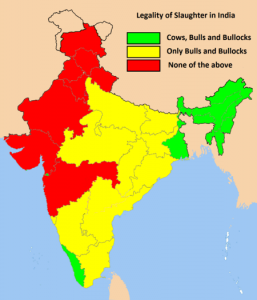
Cow slaughter laws in various states of India. Red – None of the above are allowed Yellow – Bulls and Bullocks are allowed Green – Cows, Bulls and Bullocks are allowed to be slaughtered.
Cow slaughter laws in various states of India. Red – None of the above are allowed Yellow – Bulls and Bullocks are allowed Green – Cows, Bulls and Bullocks are allowed to be slaughtered.
The “Preservation, protection and improvement of stock and prevention of animal diseases, veterinary training and practice” is Entry 15 of the State List of the Seventh Schedule of the Constitution, meaning that State Legislatures have exclusive powers to legislate the prevention of slaughter and preservation of cattle.
Several State Governments and Union Territories (UTs) have enacted cattle preservation laws in one form or the other. Arunachal Pradesh, Kerala, Meghalaya, Mizoram, Nagaland, Tripura and Lakshadweep have no legislation. All other states/UTs have enacted legislation to prevent the slaughter of cow and its progeny. Kerala is a major consumer of beef and has no regulation on the slaughter of cow and its progeny. As a result, cattle are regularly smuggled into Kerala from the neighboring States of Tamil Nadu, Karnataka and Andhra Pradesh, for the purpose of slaughter.
In May 2016, Bombay High Court gave the judgement that consumption or possession of beef is legal under Article 21 of Constitution of India, but upholds the ban on cow slaughter in the state of Maharashtra. Thus, beef must be transported from other states to the State of Maharashtra (Mumbai).
Uniformity
No state law explicitly bans the consumption of beef. There is a lack of uniformity among State laws governing cattle slaughter. The strictest laws are in Delhi, Gujarat, Maharashtra, Madhya Pradesh, Punjab, Rajasthan and Uttar Pradesh, where the slaughter of cow and its progeny, including bulls and bullocks of all ages, is completely banned.
Most States prohibit the slaughter of cows of all ages. However, Assam and West Bengal permit the slaughter of cows of over the ages of 10 and 14 years, respectively. Most States prohibit the slaughter of calves, whether male or female. With the exception of Bihar and Rajasthan, where age of a calf is given as below 3 years, the other States have not defined the age of a calf. According to the National Commission on Cattle, the definition of a calf being followed in Maharashtra, by some executive instructions, was “below the age of 1 year”.
Constituent Assembly
After India attained Independence, the members of the Constituent Assembly, a body consisting of indirectly elected representatives set up for the purpose of drafting a constitution for India, debated the question of making a provision for the protection and preservation of the cow in the Constitution of India. An amendment for including a provision in the Directive Principles of State Policy as Article 38A was introduced. The amendment reads: “The State shall endeavor to organize agriculture and animal husbandry on modern and scientific lines and shall in particular take steps for preserving and improving the breeds of cattle and prohibit the slaughter of cow and other useful cattle, specially milk and draught cattle and their young stock”. The word “cow’ includes bulls, bullocks, young stock of genus cow.
A number of Private Member’s Bills and Resolutions regarding the prevention of cow slaughter have been introduced in both Houses of Parliament, from time to time. However, none have been successful in obtaining a complete nationwide ban on cow slaughter.
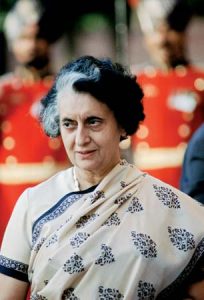
Indira Priyadarshini Gandhi (1917-1984) was a key 20th century stateswoman, a central figure of the Indian National Congress party, and to date the only female Prime Minister of India. Indira Gandhi was the only child of India’s first Prime Minister, Jawaharlal Nehru. She served as Prime Minister from 1966 to 1977 and then again from 1980 until her assassination in 1984, making her the second-longest-serving Prime Minister after her father.
Prime Minister Indira Gandhi, in her letter dated 24 February 1982, wrote to the Chief Ministers of 14 States viz. Andhra Pradesh, Assam, Bihar, Gujarat, Haryana, Himachal Pradesh, Karnataka, Madhya Pradesh, Maharashtra, Orissa, Punjab, Rajasthan, Uttar Pradesh, and Jammu and Kashmir, in which she desired that the ban be enforced in letter and spirit, that the ban on cow slaughter is not allowed to be circumvented by devious methods, and that Committees to inspect cattle before they are admitted to slaughter houses be adopted.
Recognizing that the problem basically arose on account of inaction or obstruction on the part of a few States and large scale smuggling of cows and calves from a prohibition State to a non-prohibition State like Kerala was taking place, a suggestion was made that this problem be brought to the notice of the Sarkaria Commission, which was making recommendations regarding Centre-State relations, but this idea was dropped as the Commission was then in the final stages of report-writing.
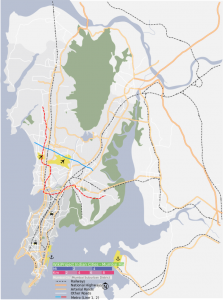
The Deonar slaughterhouse is located in Deonar, a suburb of Mumbai
The Deonar slaughterhouse is a slaughterhouse located in Deonar, in the eastern suburb of Mumbai, India. The abattoir used to be the largest in Asia since 1971. Goats, Bulls and Ox are made available differing in size and breed cost with ranges anywhere between ₹10,000 (US$150) and ₹500000 (US$7,400), the highest a shop has demanded at the abattoir. People used to buy cows and others cattle from here but when Bharatiya Janata Party-Shivsena government came to power in Maharashtra they banned the slaughtering of cow. Alas, an effective implementation of this ban has been questioned since.
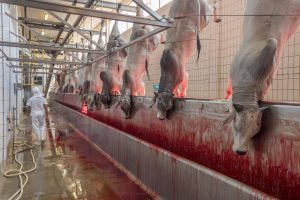
India tops in cow slaughterhouse and most slaughtering is done by Hindus. This picture was taken in India’s largest slaughterhouse: Al-Kabeer exports Pvt. Ltd. Rudraram Village, Andhra Pradesh, Patancheru, Medak, Hyderabad – 500 033.
Mahatma Gandhi: “The greatness of a nation can be judged by the way its animals are treated”
https://www.youtube.com/watch?v=733RlrQ42YU
www.occupyforanimals.net/india–cow-slaughter-and-the-illegal-cattle-mafia. html
indianexpress.com/article/…/explained-no-beef-nation/